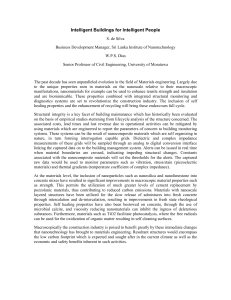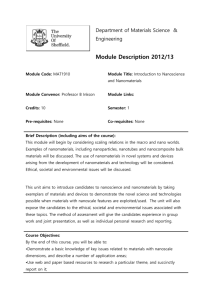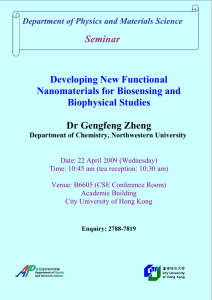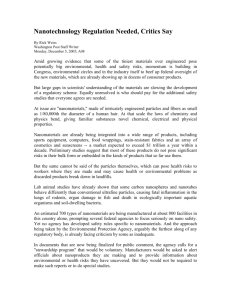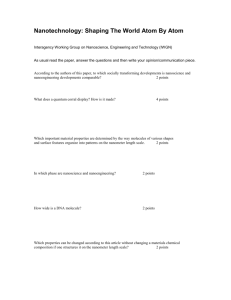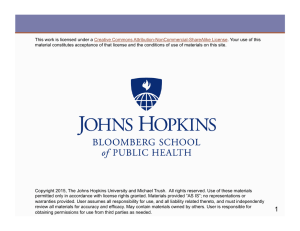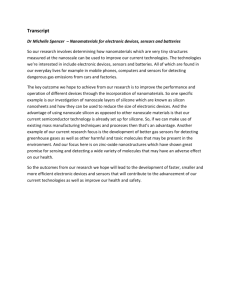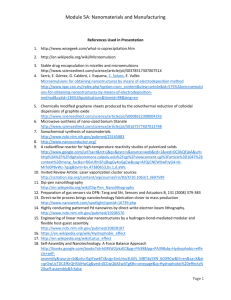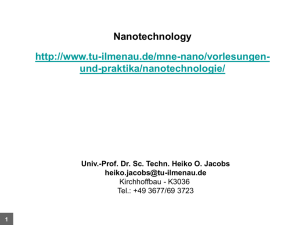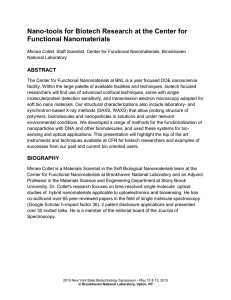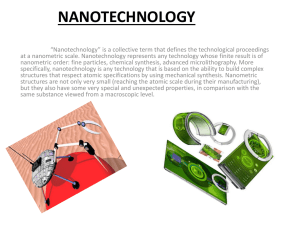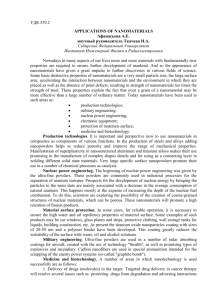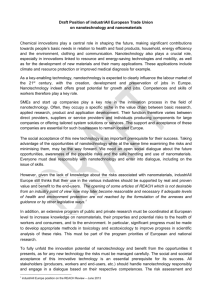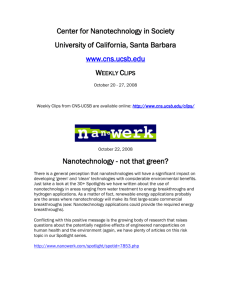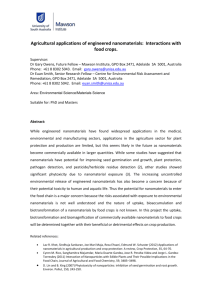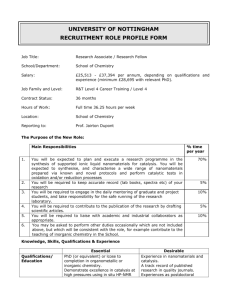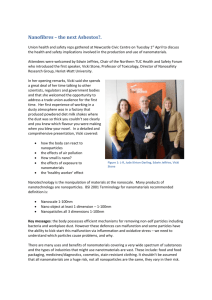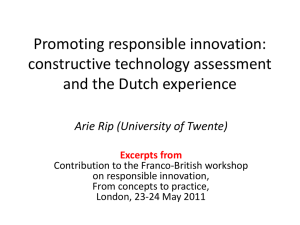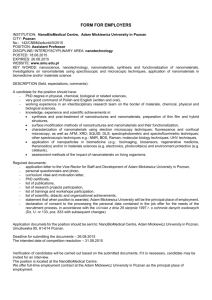1. Physical Science
advertisement
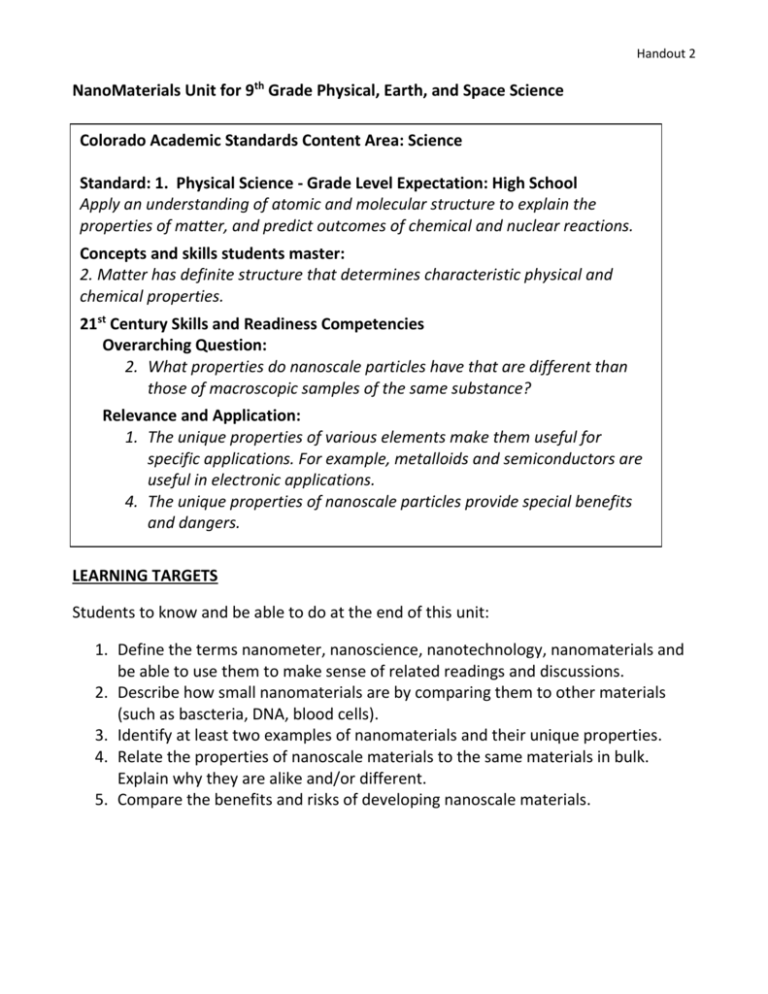
Handout 2 NanoMaterials Unit for 9th Grade Physical, Earth, and Space Science Colorado Academic Standards Content Area: Science Standard: 1. Physical Science - Grade Level Expectation: High School Apply an understanding of atomic and molecular structure to explain the properties of matter, and predict outcomes of chemical and nuclear reactions. Concepts and skills students master: 2. Matter has definite structure that determines characteristic physical and chemical properties. 21st Century Skills and Readiness Competencies Overarching Question: 2. What properties do nanoscale particles have that are different than those of macroscopic samples of the same substance? Relevance and Application: 1. The unique properties of various elements make them useful for specific applications. For example, metalloids and semiconductors are useful in electronic applications. 4. The unique properties of nanoscale particles provide special benefits and dangers. LEARNING TARGETS Students to know and be able to do at the end of this unit: 1. Define the terms nanometer, nanoscience, nanotechnology, nanomaterials and be able to use them to make sense of related readings and discussions. 2. Describe how small nanomaterials are by comparing them to other materials (such as bascteria, DNA, blood cells). 3. Identify at least two examples of nanomaterials and their unique properties. 4. Relate the properties of nanoscale materials to the same materials in bulk. Explain why they are alike and/or different. 5. Compare the benefits and risks of developing nanoscale materials. Handout 2 Possible Learning Activities These are not listed in any particular order. You do not have to include all activities in your proposed plan and you may repeat activities as needed. These same activities are listed on the cards that will be provided by your facilitator. Students answer a set of 8 – 10 questions directly related to learning targets – multiple choice. Students design and conduct a scientific investigation involving a nanofabric designed to test its properties as compared to traditional fabrics. Students read a text (brochure? article?) about nanomaterials and respond to questions provided by the teacher. Students listen to a lecture about nanoscience / nanotechnology / nanomaterials. Students participate in an interactive discussion about nanoscience / nanotechnology / nanomaterials. Students follow lab instructions to verify that a nanofabric has different properties than traditional fabrics. Students watch a video about nanoscience / nanotechnology / nanomaterials. Students respond to a choice of 3 writing prompts. General rubric for open response questions is provided. Students assess their learning as judged against learning targets. Students participate in a debate about the continued pursuit of nanoscience and nanotechnology (add your own ideas )
